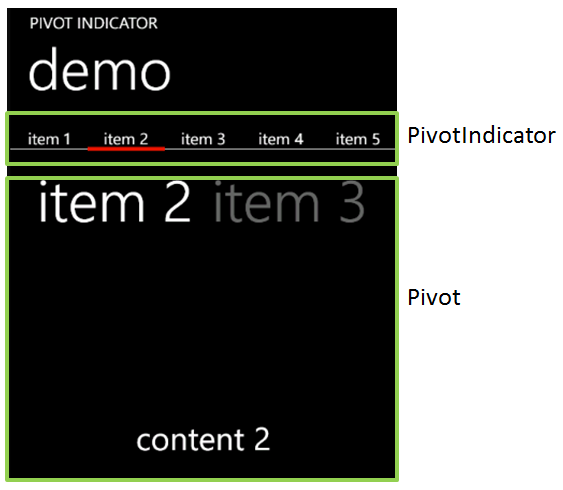Update: source code is now available on GitHub.
Today I would like to share a nice control which is part of my mysterious Windows Phone 7 app which will be released later this month. I call this control the PivotIndicator control. It can be used in order to show the user all the items in a PivotControl on a single screen, as shortcuts. A small rectangle (which use the phone’s accent color as background) is animated when the current pivot item changes. The user can press any item to immediately go to the associated pivot item.
You can grab the source code here.
Here is a short video showing the control in action:
[mediaplayer src=’/wp-content/uploads/PivotIndicator.wmv’ width=432 height=808 ]
Now let’s see the details…
- How to use it?
- Adjust the layout of your page to be able to display the PivotIndicator. Typically this involves adding a row with a ‘*’ height.
- Use a binding with an ElementName in order to set the Pivot property of the PivotIndicator control
- Define the HeaderTemplate property of the PivotIndicator with a DataTemplate which will be used to render each item in the PivotIndicator
- You’re done 🙂
- How it works?
- SplitPanel: this is a panel (it derives from Panel) which arrange its children on a single line, and where each item has the same width. The width is computed as the total available width divided by the number of items
- PivotRectange: this is a small control which contains a rectangle. The rectangle uses the phone’s accent color. Its position is animated based on the currently selected index.
- PivotIndicator: is the control you will use. It is made of an ItemsControl with a SplitPanel as ItemsPanelTemplate and the PivotRectangle
